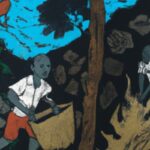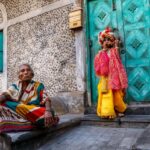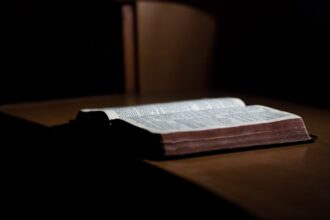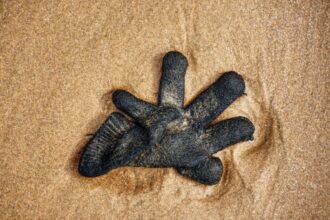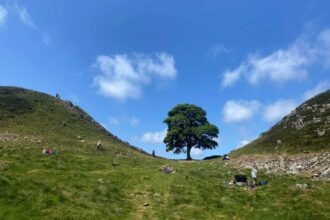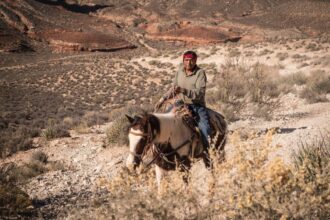Have you ever wondered about the intricate tapestry that makes up the African continent? The “Map of Africa with Ethnic Boundaries” by George Murdock is not just a map; it’s a window into the past, a revelation of the complex fabric of cultures, languages, and traditions. This map, a remarkable piece of anthropological art, offers a unique perspective on the diverse ethnic landscapes that have shaped Africa. Let´s talk about the depths of this fascinating map with us as we explore the hidden stories and truths behind.
- Understanding the Map of Africa with Ethnic Boundaries
- Challenges and Controversies Surrounding the Map
- Imagining a Unified Continent: The Map of Africa with Ethnic Boundaries Beyond Current Borders
- Decolonization and Reinterpretation of the Map
- The Map’s Role in Contemporary African Unity and Identity
- Reflecting on the Future through the Map of Africa with Ethnic Boundaries
Understanding the Map of Africa with Ethnic Boundaries
This is more than a geographical representation; it’s a historical treasure trove that delineates the more than 2000 ethnic groups that inhabit the African continent. Murdock’s map is a testament to the rich cultural mosaic that is Africa. However, interpreting the map requires understanding its context and the time in which it was created. This map is not just a visual tool; it’s an academic endeavor that attempts to categorize the intricate ethnic diversities and cultural complexities of Africa.
This holds significant academic and cultural value. It provides insight into the historical movements, social structures, and linguistic ties that bind the African people. The map is a crucial resource for historians, anthropologists, and educators seeking to understand the intricate patchwork of African society. Beyond its academic relevance, the “Map of Africa with Ethnic Boundaries” serves as a reminder of the continent’s rich heritage and the enduring spirit of its people.
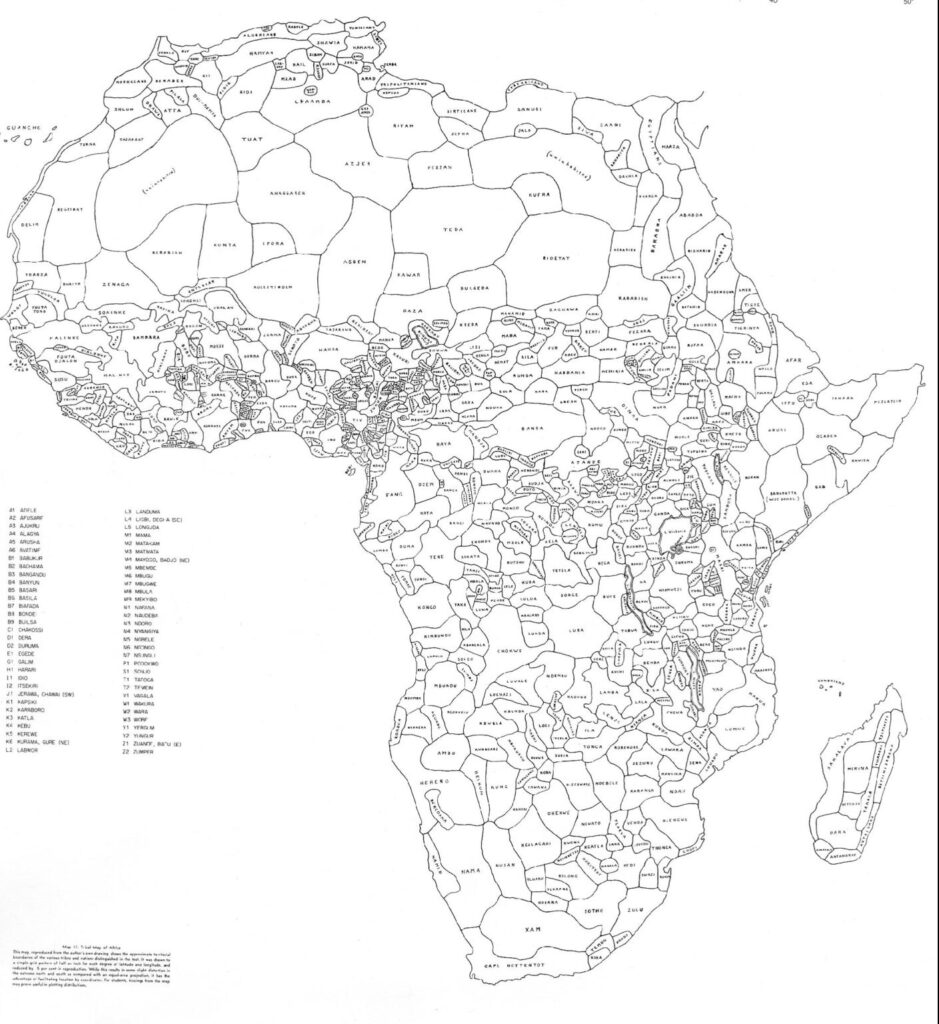
Challenges and Controversies Surrounding the Map
While the “Map of Africa with Ethnic Boundaries” by George Murdock is a valuable resource, it is not without its controversies. The concept of defining ethnic boundaries is complex and fraught with challenges. Critics argue that such maps can oversimplify the fluid and dynamic nature of ethnic identities. Moreover, it reflects the knowledge and biases of its time, leading to debates over its accuracy and relevance in contemporary studies.
Despite the controversies, the map continues to be an important tool for understanding the continent’s rich cultural landscape. It serves as a starting point for conversations about identity, heritage, and history. The map’s legacy is not just in the lines it draws but in the questions it prompts about who we are and how we relate to one another. From my perspective, it is more than a historical artifact; it’s a catalyst for exploration and understanding in the ever-evolving story of Africa.
Imagining a Unified Continent: The Map of Africa with Ethnic Boundaries Beyond Current Borders
Imagine a scenario where the “Map of Africa with Ethnic Boundaries” does not adhere to the colonial lines drawn without the consent of the African people but instead reflects the genuine ethnic regions as understood by the inhabitants themselves. This visualization transcends modern political borders, presenting a continent unified not by arbitrary lines but by the true cultural and ethnic ties that define its people. Such a map challenges us to reconsider the legacy of colonialism and the artificial divisions it imposed.
In this alternate vision, it becomes a tool for reimagining Africa’s identity beyond colonial constraints. It invites viewers to explore a continent where boundaries align with cultural and historical realities rather than political expediency. This perspective aligns with decolonization efforts, aiming to reclaim African narratives and restore autonomy over African lands and histories. The map, in this context, serves not only as a symbol of what has been lost but also as a blueprint for a future where African ethnicities are acknowledged and celebrated in their own right.

Decolonization and Reinterpretation of the Map
The process of decolonization is not merely political but also cultural and psychological. In this light, it can be reinterpreted as a manifesto of African resilience and autonomy. By visualizing the continent’s ethnic landscapes without colonial impositions, we can foster a deeper understanding of Africa’s pre-colonial heritage and the resilience of its people.
This reimagined map serves as a reminder that the true essence of Africa lies in its diverse cultures, languages, and traditions. It champions the decolonization movement by illustrating a return to indigenous knowledge and territorial integrity. The map prompts a dialogue about identity, sovereignty, and the right to self-determination, core tenets of the decolonization discourse.
The Map’s Role in Contemporary African Unity and Identity
In today’s globalized world, the “Map of Africa with Ethnic Boundaries” holds potential as a symbol of unity and shared heritage among African nations. By acknowledging the continent’s rich mosaic of ethnicities, we can forge a collective identity that respects individual traditions while promoting pan-African solidarity. This unity is essential in the face of external challenges and is a powerful counter-narrative to the divisive legacies of colonialism.
Furthermore, the map can inspire a new generation of Africans to explore their roots, understand their neighbors, and build bridges across ethnic lines. It encourages a reflection on what it means to be African in the modern world and how diverse histories and cultures can coalesce into a unified force for progress and stability.
Reflecting on the Future through the Map of Africa with Ethnic Boundaries
The map is more than a historical document; it is a vision of what Africa could become if we embrace the true diversity and complexity of its people. As we move forward, this map can guide efforts to heal the wounds of the past and build a future where all Africans are connected not by the borders imposed upon them, but by the shared history and mutual respect for each other’s cultures.
The journey toward this future is long and fraught with challenges, but by reimagining the continent’s boundaries through the lens of decolonization and cultural respect, we can begin to rewrite the narrative of Africa. The “Map of Africa with Ethnic Boundaries” thus stands not as a relic of a bygone era but as a beacon of hope and a call to action for all those committed to forging a more inclusive, understanding, and united Africa.












